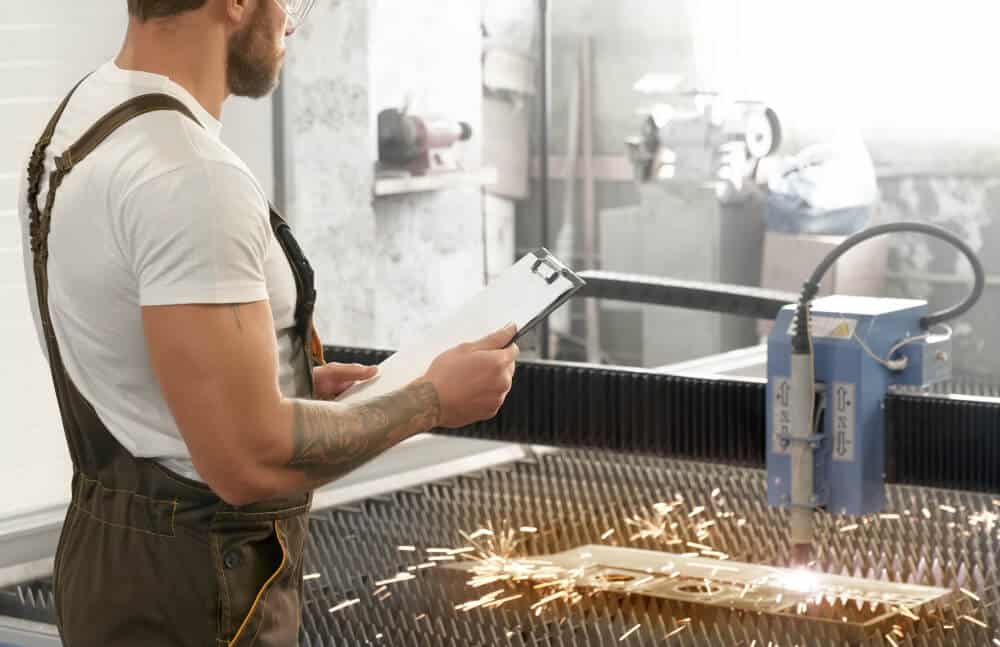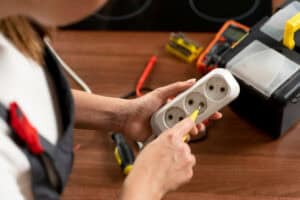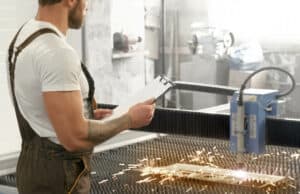News
Comparative Guide: CNC Machining vs. Laser Cutting

When designing a manufacturing project, there are times when different techniques can be chosen for the same applications. Often, the choice comes down to CNC machining vs. laser cutting.
It is important to understand the characteristics, advantages, and limitations of each method to make an informed decision that fits the unique needs of the project. To assist you, we have prepared a comprehensive comparison between the two methods.
Introduction to Laser Cutting and CNC Machining
What is Laser Cutting?
Laser cutting is a manufacturing process using a focused laser beam to cut various materials with high precision. The beam melts, burns, or vaporizes the material, depending on its type, leaving behind a clean and smooth cut with no need for further processing.
The process is contactless, ensuring that the cutting tools do not degrade, maintaining high accuracy over time. Laser cutting is applied in many industries, including medical, electronics, jewelry, and the automotive industry.
Common Laser Cutting Processes:
- CO2 Laser Cutting: Particularly suitable for non-metallic materials such as wood, plastic, glass, and textiles.
- Fiber Laser Cutting: Mainly used for cutting metals such as stainless steel, aluminum, steel, and special alloys.
- Nd:YAG Laser Cutting: Primarily used for applications requiring processing of thick and tough materials.
What is CNC Machining?
CNC (Computer Numerical Control) machining is a computer-based manufacturing technology where cutting tools remove material from a raw block to create a custom component. CNC is used for milling, turning, drilling, and grinding a variety of materials, including metals, plastics, ceramics, and composites. This technology allows for the production of complex parts with high precision and maximum repeatability.
Common CNC Machining Processes:
- CNC Milling: A process where a rotating cutting tool removes material to create a three-dimensional shape.
- CNC Turning: A precise method for cutting shapes and patterns into a material.
- CNC Drilling: Creating precise holes for threading, assembly, or other engineering applications.
The Importance of the Right Choice for the Project
Choosing between laser cutting and CNC machining depends on several key factors:
Precision and Finish
Laser cutting offers extremely high precision, up to 50 microns, and is especially suited for micro-holes and delicate structures. It produces clean edges with no cutting marks, reducing the need for further polishing. On the other hand, CNC machining offers higher precision for tasks requiring three-dimensional dimensions, but it may require additional finishing work to achieve a perfect surface finish.
Speed and Efficiency
Laser cutting is particularly fast and efficient for cutting flat, thin sheets, while CNC machining is more suited for processing three-dimensional and more complex parts. In many cases, CNC machining may take longer due to the need for material removal in stages.
Material Type
Laser cutting is suitable for a wide range of materials, including metals, wood, plastics, and glass, but is limited when it comes to reflective materials like copper and aluminum. On the other hand, CNC machining can handle nearly all types of materials, including extremely tough metals such as titanium and special alloys.
Cost
Laser cuttin is cheaper for simple projects and small quantities. In contrast, CNC machining is ideal for large-scale production of complex components, which reduces the unit cost for mass production.
Advantages of Laser Cutting
- Micro-precision (up to 50 microns).
- Especially suitable for micro-holes and complex structures.
- Highly efficient in the medical device and electronics industries.
- Fast cutting with a clean finish, requiring no further processing.
- Easy to cut complex shapes.
Advantages of CNC Machining
- Suitable for complex three-dimensional work.
- Capable of working with a wide range of materials, including very hard materials.
- Excellent for mass production with high repeatability.
- Can produce parts that require great precision and complex geometry.
- Capable of performing turning, milling, and deep drilling.
When to Use Each Technology?
Laser Cutting is Suitable for Projects Like:
- Highly precise micro-work: Extremely delicate cutting for sensitive products.
- Microfluidic systems: Used in the medical and biotechnology industries.
- Fine electronics manufacturing: Cutting intricate and very thin components.
CNC Machining is Suitable for Projects Like:
- Larger parts with high mechanical strength requirements.
- Three-dimensional processing of complex components.
- Projects requiring turning, milling, and deep drilling.
- Mass production of components requiring perfect uniformity.
Conclusion and Recommendations
When choosing between CNC machining and laser cutting, it is important to match the technology to the project’s requirements, such as the material type, design complexity, required precision, and quantity needed.
Laser cutting excels in precise and delicate tasks, while CNC machining is ideal for three-dimensional processing and manufacturing complex parts. Additionally, one must consider the heat effect in the laser cutting process, which may alter the material’s properties, while CNC machining allows full control over texture and surface finish.
A combination of both methods can be the optimal solution—for example, using laser cutting for preparing the raw material and then CNC machining for completing precise details.
Admati Agencies offers a wide range of advanced services, including CNC machining and laser cutting.
Our Advantages:
- Experience and Expertise: Since 2007, the company has provided quality solutions to hundreds of clients, including leading international companies such as Intel, Nvidia, Qualcomm, and SolarEdge.
- Commitment to Quality: Strict quality control at all stages of production, from design to the final product.
- Comprehensive Service: Client support from research and development through mass production to shipping and quality assurance.
- Advanced Technology: Use of the latest equipment and technologies.
In conclusion, when choosing the right technology for your project, it is recommended to consult with the experts at Admati Agencies, who will help match the optimal solution to your unique needs.
More News Articles



